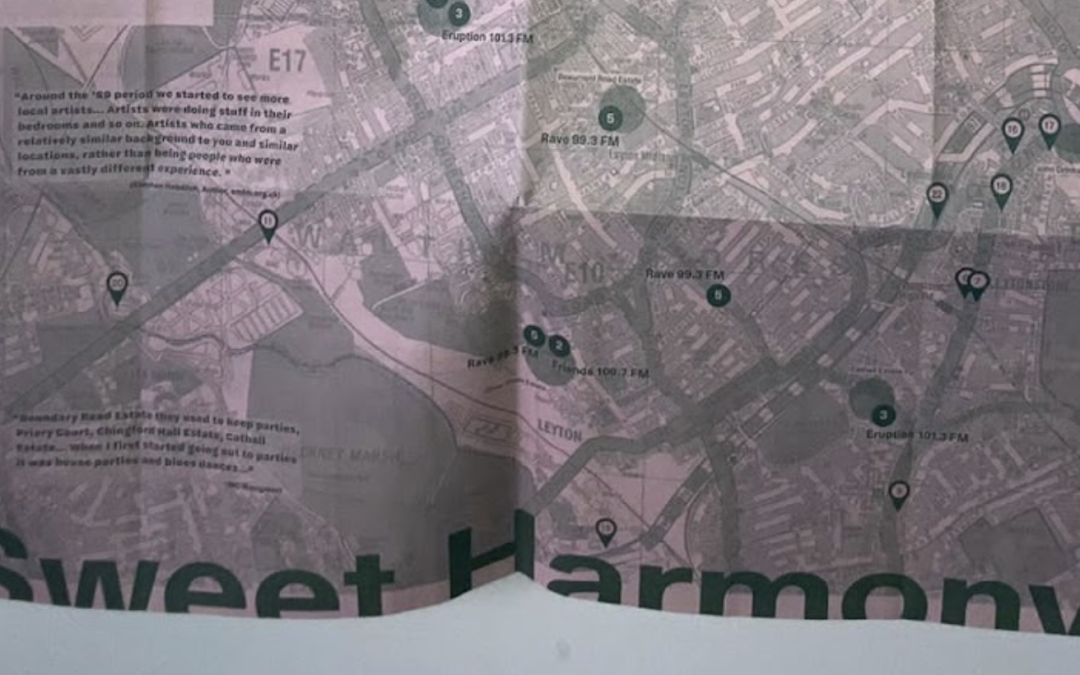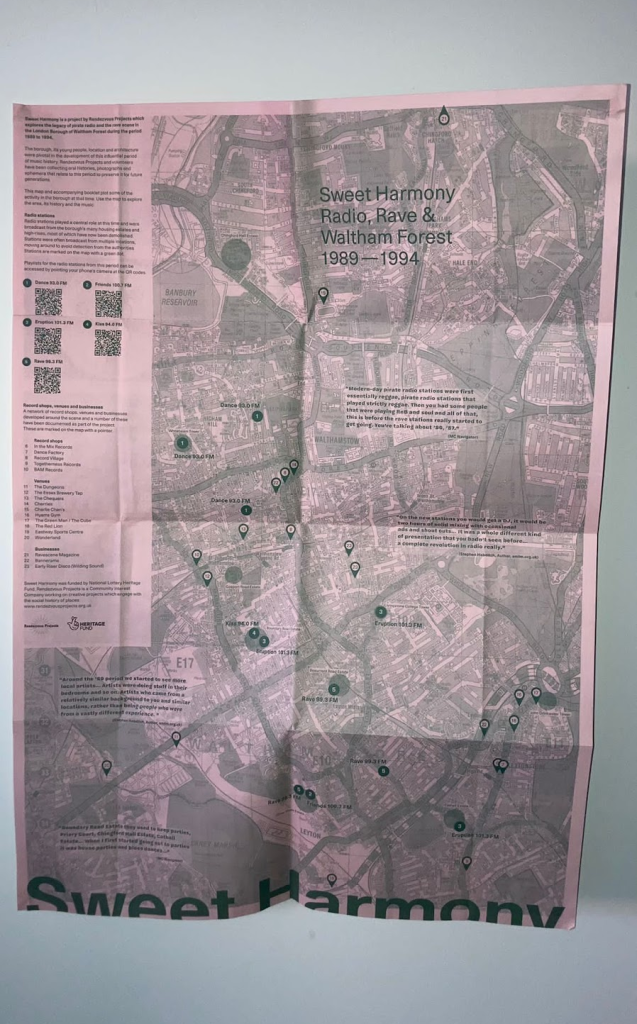
When Waltham Forest was the London Borough of Culture a few years back, they produced a map in conjunction with Rendezvous Projects, an initiative which explored the legacy of the pirate radio and rave scene in the borough between 1989 and 1994. The map was printed under the banner of “Sweet Harmony: Radio, Rave, and Waltham Forest” and was an output following the collection of oral histories, photographs, and physical ephemera (such as flyers and tickets). The map shows the previous locations of ten nightclubs, three businesses, five record shops, and five pirate stations (with multiple locations for each, presumably as they moved around trying to avoid the authorities)—all clustered around a fairly compact geographical area in the southern half of the borough, mostly between Leytonstone and Walthamstow. And this was just one small part of the city, arguably psychologically further from the centre of London at the time, but maybe closer to the action of the orbital. A similar flowering was happening all across the city. Living at the top of a block of flats on a hill in Finsbury Park in the mid-nineties yielded an audio smorgasbord through the dial swirl, with nascent 4/4 UK garage grinding up against more established house, jungle, techno, and just plain old rave, mixed in across the spectrum amongst indecipherable born-again meanderings, and heavy patois stream-of-consciousness flows over ragga. Every month, frequencies would move, stations would disappear and then pop back up again, or new ones would materialise. It was impossible to keep up with, and in pre-internet days you had to rely on serendipitous discovery through the static to find what music you wanted.
Culture, like LSD, comes in waves—it ebbs and flows. Where did all the stations from the pirate era of the nineties go? Why did they disappear? Not all of them did; some survived and made themselves commercially sustainable, but inevitably lost some of the magic and energy of what birthed them in the first place. Pirate FM radio, as attractive as it is to have that potentially massive geographical and serendipitous reach, is a high-stress activity with considerable risk of unpleasant overlap with the police, court appearances, fines, and jail time. The technical bar to entry is high too. A5 photocopied guides about RF tech and transmitters saying “anyone can do it” were still beyond the ken of most ravers, and would easily burn a hole in finances. The flame burned brightly —and still does, in some quarters—but its peak was relatively brief.
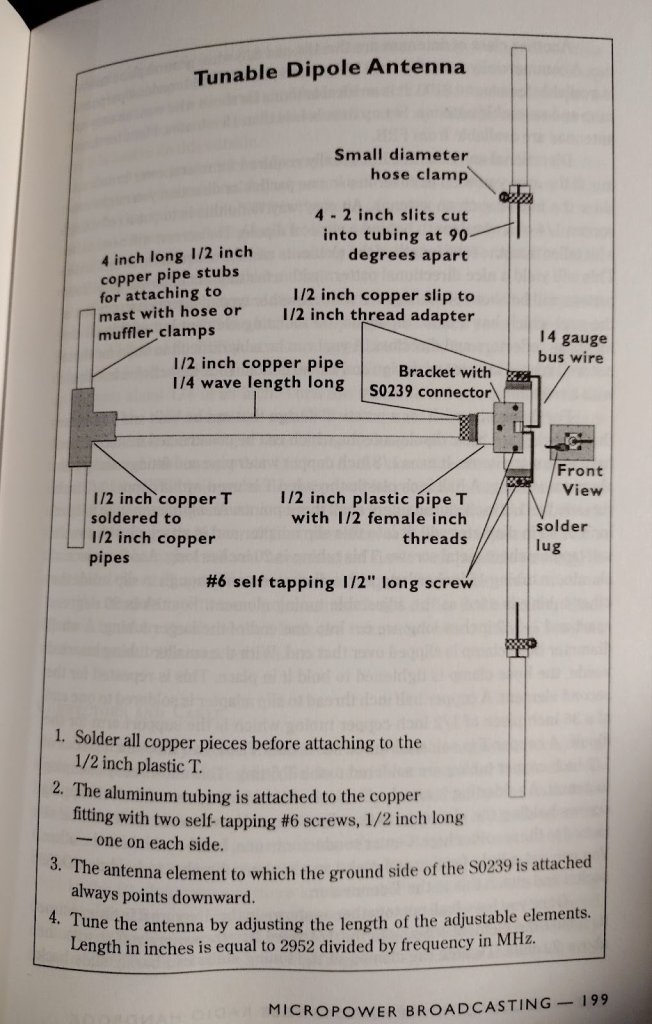
Aspects of this period are mirrored somewhat in the flourishing of online radio micro-stations across the capital and further afield today. A brief whirl through the stations living on the Radio Cult app shows what can be done on a minimal budget. These stations provide a sense of community and loyalty that has almost disappeared with the commercialisation and brand-saturation of what was once considered a fairly underground activity (by which I mean dance music in general, which is still the primary driver of these stations). The internet has its yin and yang—particularly with social media and the incessant drive to publish, or the infinite flotsam of Soundcloud mixes—but on the positive side the technology and services are there to start a station almost from nothing. All that is needed now, at its most basic level, is a stable broadband connection and a laptop to get started, as the speed of every internet provider makes it easy to provide a decent quality audio stream to listeners. Of course, if a station gets bigger more building blocks will be required, but in terms of a level playing field with parity of initial access, it is far more horizontal today than the FM era. This time we are living through in the twenties with the choices on offer via internet radio should be lauded as equally exciting as its pirate heyday.
And yet, something feels amiss. Is the activity in the current period sustainable, or is it destined to flicker out like the past? A friend organised an evening in a King’s Cross pub at the tail end of the summer. There were two floors of music with DJs. It was sparsely attended, despite entry being free. The selectors were mostly relative minnows in the online radio ecosystem. One of the DJs shared his thoughts with this author on the state of the nation, in terms of the “return on investment” from doing a radio show on an internet-only station. During the lockdown, doing his show had felt vibrant—an outlet, a way to communicate and interact with people who were inaccessible. Whereas now, with declining if non-existent listenership, it was beginning to feel more like a chore. The time required to gather some records, purchase some new music, think about the direction of a show, and even just haul himself into the studio seemed no longer worth it. Listenership is impossible to ascertain across all of the underground internet radio stations, but anecdotally it appears that the gains during the lockdowns have faded, or even dropped below pre-pandemic levels. This was somewhat inevitable as people have rediscovered going out late, socialising, and being comfortable in crowds and enclosed spaces. You’re not going to be listening to the radio as much if you’re not sitting or working at home; too wrecked from the weekend to think about anything but sleep.
Why bother then, doing a music radio show, if nobody is listening? (If a DJ does a radio show in the woods, does it make a sound?) There is no one simple answer to this. It can depend on a person’s initial drive to begin, or their motivations from good to worse (greed, sex, ego) to continue. But in the first place, there must have been some spark—an urge to create and connect—that transcends any vacuous goal such as wanting to be famous or make money. The Spinozist pianist Daniel Barenboim states in Music Quickens Time that “music possesses a power that goes beyond words. It has the power to move us, and it has the sheer physical power of sound, which literally resonates within our bodies for the duration of its existence… the idea of music, as we see, could be a model for society; it teaches us the importance of the interconnection between transparency, power and force.” Equally, in This is Your Brain on Music, neuroscientist Daniel J. Levitin explains how music is unusual “among all human activities for both its ubiquity and its antiquity. No known human culture now or anytime in the recorded past lacked music. Some of the oldest physical artefacts found in human and protohuman excavation sites are musical instruments: bone flutes and animal skins stretched over tree stumps to make drums. Whenever humans come together, music is there”. Music and its social, ritualistic aspects appear to be hardwired into our DNA, and our experiences with it connect emotions with memory, activating the amygdala.
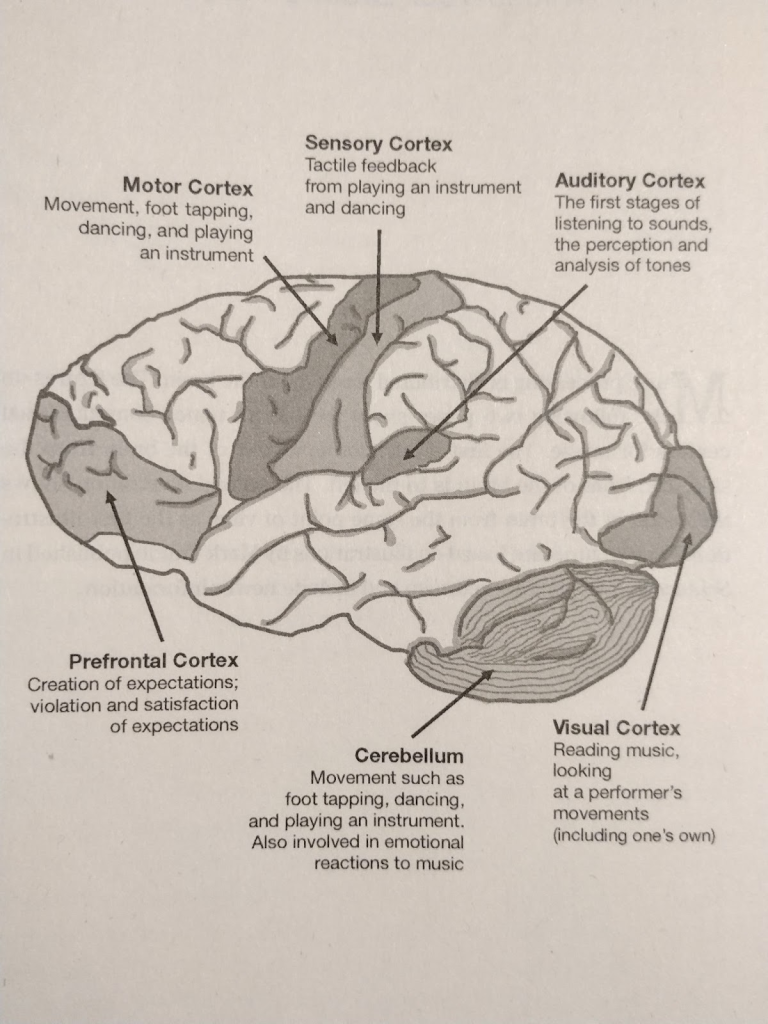
“Share” is the salient word here. As far back as Aristotle, there was a deep understanding of the necessity for interaction with peers, of humans as social animals. As captivating as the idea of a lone genius emerging from hermitage with an array of unique sounds might be, music is best created and experienced with others. Levitin explains how up until the advent of professional musicians, only a few hundred years ago, music performance was predominantly a participatory pastime, rather than one to be consumed. Think of collective singing and chanting, or a drum circle. Once instruments became more complex and required instruction, and as technologies such as wood and strings enabled a greater range of notes and timbres to be played, the essence of how humans experienced music changed. As technology continued to develop in the form of recorded and broadcast music, the acceleration away from a participatory encounter was amplified. But buried deep down in our hindbrain somewhere is a long, evolutionary desire to revel in it with our peers, our tribe. Let’s say then that the inceptive desire to do a radio show stems from this part of the human condition, to share the emotions which music provokes on some level.
But what happens when that communal aspect is absent and nobody is tuned in to your show? Opinions were canvassed in a wholly unscientific approach from members of the “Love Will Save The Day” WhatsApp group, who exchange thoughts on music, share mixes and shows, and report back on gigs or clubs they’ve attended. Tom says: “I had shows on well known internet stations for years and really enjoyed it at times, but in the end I couldn’t find the motivation to keep doing it when I didn’t know how many people were listening. My guess was not very many. The first regular radio show I ever did was on a pirate [station] in Tottenham back in the day, because it was on FM that you’d get regular people discovering it and sending shout-outs, regular people on their way home from work or doing the ironing. That buzz just wasn’t there online. Without the interaction with listeners you might as well be sat at home in your warm house having a tea out of your own mug.” Oliver asked: “I do wish my radio station had a chat tool. But then if it did and it was empty would it make me feel shit?”
The short answer to that is “yes”, but that realisation comes to people at different times in their arc as a radio DJ. In the early stages, many people are just happy to be playing their choice of music and care little about the number of listeners or lack of interactions.
Ciaran says:
“I never did radio ’til lockdown when a conversation with an old mate ended with me having a weekly show on the internet radio station for the South African version of Burning Man. That led to the show being distributed on the global Burning Man radio network. I’ve no idea how many people listen but it’s my little escape valve, allowing me to play records and ramble on about music once a week and I absolutely love it. Most of my feedback is from mates listening back on SoundCloud. I love the idea that I’m the playlist as they have dinner. Listener counts are pretty much useless for me as, apparently, anyone listening through TuneIn counts as one person.”
Max says:
“One way of looking at it I really love is if you had five mates listening to you playing tunes in your living room you’d be gassed. So five listeners isn’t a total waste of time.”
What happened to the people involved in running the FM stations? Most voluntary organisations end up depending on one or two people to keep the engine running. When that person leaves, the whole operation can be thrown into crisis, because there’s no one left behind that can take up the mantle as they don’t have the time or administrative skills, or have the same energy or leadership drive to motivate others to keep it going. And as mentioned above, life moves on for most people, and the threat of a stint in jail for putting a transmitter on a roof becomes far less sexy if you have kids, a job, rent or mortgage to pay. It’s easier just to fold and to move onto something else, or just quit entirely. The danger of this happening also exists with today’s internet stations, where there are single person dependencies and points of failure. Once the labour of love isn’t giving so much love back any more, the enthusiasm can drain easily. Because the initial outlay to get involved is lower, walking away from it isn’t as huge a loss financially.
What happens to the show hosts? Where do they all disappear to, and why do they give up doing their shows? The attrition here can be attributed to the usual suspects that destroy creative and social activities for the general population—the wear and tear that comes with ageing, easy access to TV as a social crutch, raising children and its consequent exhaustion and, of course, the novelty factor wearing off. There is a perception that creativity declines with age, but this isn’t necessarily so. Look at poets, artists, mathematicians, who have matured and improved with their advancing years. But the “sharing” aspects of music scenes—be it gigs, clubs, radio, festivals, whatever—often come with late nights, alcohol, drugs, hangovers, days written off, and tinnitus. How much of this can anyone realistically take, especially with activities that exacerbate cognitive decline? It becomes more of a struggle to resist against the modern urge to consume rather than create.
Perhaps today’s internet radio isn’t quite the same as the FM era then, and never will be, despite the flowering of so many stations. Live radio, focusing predominantly on underground or alternative music has various opposing 600-pound gorillas squashing its potential underfoot. Why listen to radio, with someone else (the horror!) making the selections, when all the music that you like, or will likely like via the thrust of a mega-funded tech algorithm that scoops up your data, can be piped straight to you. Soundcloud, Mixcloud, Spotify, and Apple Music have the know-how to deliver music that you didn’t even know you wanted. The internet has also destroyed (not a bad thing perhaps?) the Peel-esque concept of the radio DJ as a towering expert in music, gatekeeping and being infinitely more knowledgeable (than you) from years of graft. Now, you can immerse yourself in any emerging scene in a matter of hours with a wander through YouTube, possibly even venturing as far as Bandcamp or Discogs. Radio as the primary place to discover new music simply no longer holds. The struggle for live listeners or even listen-backs becomes ever more intense unless hosts can offer an audience something beyond Just Another Mix, more than “That one was… this next one is…”
In order to keep that amygdala fed and watered, and for it to remain in a happy place, listeners need to feel connected to a show, a station, and other listeners. For radio show hosts, the serotonin paybacks come from interactions from those listeners, and listening to other hosts doing a similar thing, who they can then meet in real life, rather than just having abstract national or global heroes. Sharing and communality fuel longevity. “Five mates tuning in”, “only having a laugh on the decks”, or just showing up at the studio every month, not knowing or caring how many people are tuning in or listening back, and not connecting with your tribe, will have an extremely limited shelf life. Aaja Music, a station in Deptford, recently hid the listen plays on their Soundcloud shows, so show hosts cannot see how many times their output has been checked out afterwards. Their given rationale for this is that some shows have more plays than others, and they “want everyone to be even”. But with this information completely opaque, it means that hosts get little subconscious serotonin kicks from their time investment.
This policy seems ill-considered at best and dishonest at worst. If that innate, DNA-encoded desire to share isn’t being met, hosts will inevitably walk away. Stations should make audience data visible, or at least offer the option, especially if those hosts are paying monthly subscriptions that finance the station. Even if the figures are low, it is better for all concerned to know than to not know. Similarly, hosts need to be realistic with themselves about their shows and listenership, given the infinite number of alternative options that music aficionados have for discovery. Like the enormous catalogue of exciting bands that never get signed and make a hit record, there will be a large cache of radio DJs who won’t get a slot on the big stations, and whose audience won’t ever reach huge numbers. New DJs should be encouraged to steel themselves for low double figures with playbacks, and an empty chatroom on their station website, at least initially. This grim reality can be tempered with advice from station managers on how to market your show, draw in listeners, connect with others, and measures to combat burnout.
What level of audience is enough to sustain continued interest in hosting a radio show? Is there a sweet psychological spot that balances the ethos of “just having fun with it” vs. fulfilling the neurotransmitter impulses? Is there an equivalent “Dunbar’s number” for listenership? This is difficult to pin down, as individuals will have differing starting base points and eventual arc objectives from their time. And some hardened outliers will continue with their show come hell or high water. But let’s try to ascertain a generic plotting for the majority of the population that decide to get involved. Undoubtedly the largest stumbling block, of those mentioned above, to extended association is parenthood. The loss of individual autonomy from the added responsibility for the complete care of another human being is the single biggest life event that scuppers discretionary cultural endeavours. This impacts the childless, too, as their circle of free-spirited friends shrinks. The mean age for first time parents in the UK is approximately 31 (mother 29, father 33) with a second child coming around two years later.
Let’s start with X(b), a live listenership number that you decide you are happy with when you start doing a radio show, which acts as the baseline for the rest of this plotted graph. If you are content with just five people tuning in, then X(b) is 5. But you can apply a multiplier to that value, if you would only be happy with ten, or five hundred. We’ll plot this listeners’ graph against time, thinking that the first age that most people have access to a show is when they are in their late teens or early twenties; and assuming that most shows have an initial bounce of listeners too when it is new and fresh, and then interest wanes over the years (for both sides). We’ll also include that crucial pinch point at age 31 for when parenthood typically rears its head in the UK, and assume that an audience needs to be ramped up considerably at this point, for doing a monthly show to be considered worth continuing in the face of external duress. If the show has continued at this point, let’s say that the host has overcome a serious hurdle, and drops & plateaus for a few years contentedly; but then needs another shot in the arm after age 40 for it to continue to be enticing in the face of physical and societal pressures to call it a day. Given the nature of modern internet radio, let’s include another plot on the same graph, called LB(b), which refers to people listening back to a recording of the show. This can be attributed with an initial higher base value as the serotonin kick from seeing a click just isn’t the same as live, engaged listeners. This gives us a general curve of how many listeners most hosts should need for their show to act as enough of an emotional stimulus to spur them on, rather than quit. This has been produced with an understanding that it is highly subjective and not scientifically grounded; so please do provide feedback if you consider it erroneous.
The next five to ten years should give an idea of the likely longevity of the internet radio station explosion. There are a glut of stations in the 5,000 to 25,000 social media followers bracket, many of which offering not a huge deal in terms of a USP, and whose future may be uncertain. The likely longer term winners will be those carving out a particular niche, like Foundation FM in Peckham; or those who offer a consistently high level of listener interaction, like Do You. Unfortunately there is no “wayback machine” for apps, but it’s likely that Radio Cult will look considerably different by 2027. The Walthamstow map documented a time when the pirates were everywhere—perhaps there’s now a requirement for something similar to capture the beautiful array of options available, before it disappears into the aether.
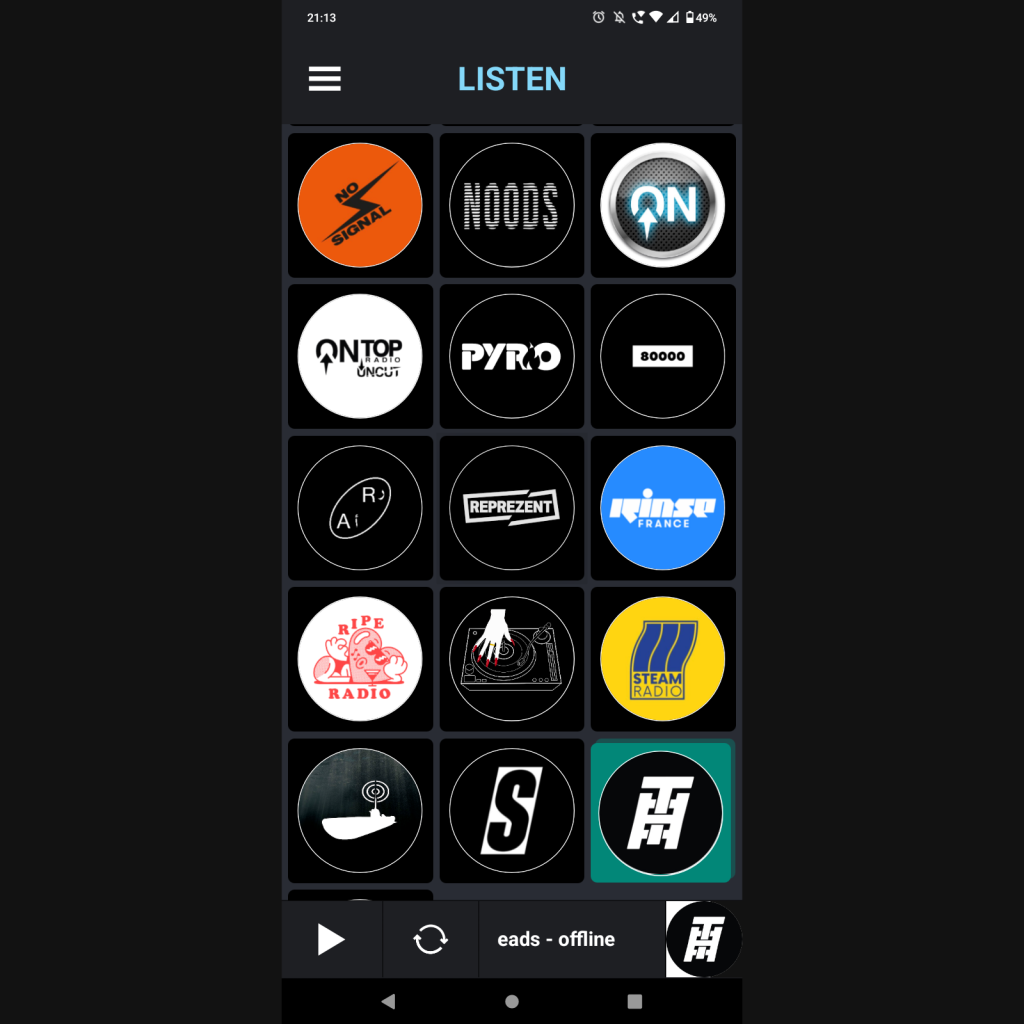
by K Redking
Editor: Alex H Honey






